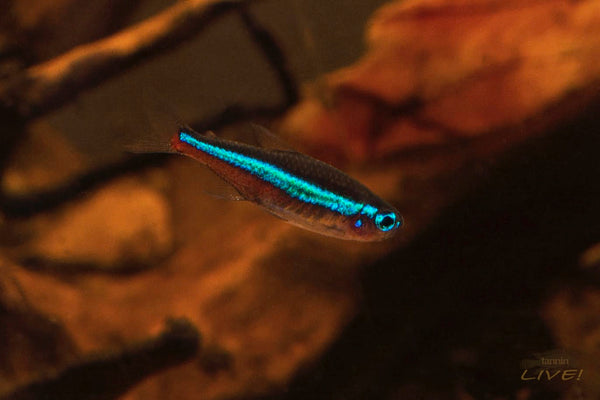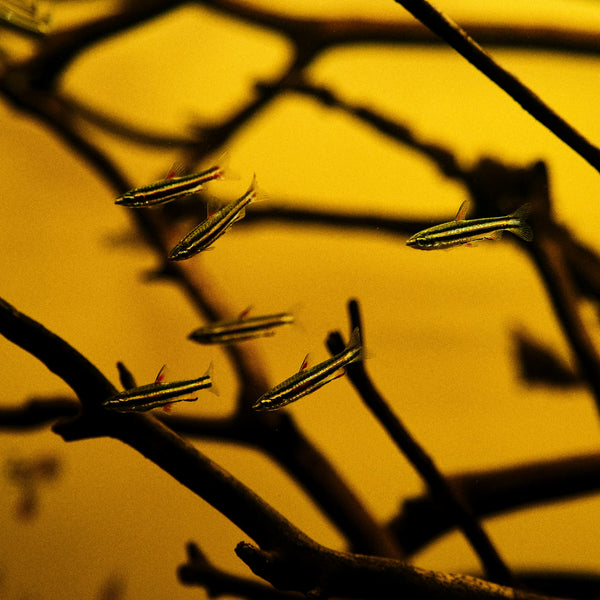- Continue Shopping
- Your Cart is Empty
Water and land- working together...
Every once in a while, it's important to go back to some of our most fundamental ideas- stuff which permeates what we do, and may stimulate us to explore things a bit further.
With all of the hype that's showing up lately about blackwater aquariums, it's sometimes fun to look back at the most basic of thoughts behind our area of interest...such as:
Where does our coveted blackwater originate?

In general, blackwaters originate from sandy soils.
High concentrations of humic acids in the water are thought to occur in drainages with what scientists call "podzol" sandy soils from which minerals have been leached. That last part is interesting, and helps explain in part the absence of minerals in blackwater.
Blackwater rivers, like the Rio Negro, for example, originate in areas which are characterized by the presence of the aforementioned podzols.

Podzols are soils with whitish-grey color, bleached by organic acids. They typically occur in humid areas like the Rio Negro and in the northern upper Amazon Basin. And the Rio Negro and other blackwater rivers, which drain the pre-Cambrian "Guiana and Brazilian shields" of geology, can in part attribute the dark color of their waters to high concentrations of dissolved humic and fulvic acids!
Although they are the most infertile soils in Amazonia, much of the nutrients are extracted from the abundant plant growth that takes place in the very top soil layers, as virtually no plant roots are observed in the mineral soil itself.

One study concluded that the Rio Negro is a blackwater river in large part because the very low nutrient concentrations of the soils that drain into it have arisen as a result of "several cycles of weathering, erosion, and sedimentation." In other words, there's not a whole lot of minerals and nutrients left in the soils to dissolve into the water to any meaningful extent!

And more than one hobbyist I know has played with the concept of "dirted" planted tanks, using terrestrial soils...hmmm.
On to something here!
Also interesting to note is that fact that soluble humic acids are adsorbed by clay minerals in what are known as "oxisol" soils, resulting in clear waters."Oxisol" soils are often classified as "laterite" soils, which some who grow plants are familiar with, known for their richness in iron and aluminum oxides. I'm no chemist, or even a planted tank geek..but aren't those important elements for aquatic plants?
Yeah...I think they are.

And, in "iagapos "(those seasonally flooded forest areas which lead to blackwater environments), the soils are conducive to good terrestrial plant growth. Fishes which reside in these habitats feed off of the materials, like fruits and seeds, which fall from the trees, or otherwise end up in the water during periods of inundation.
Interestingly, seed dispersal by fish (a process known technically as "ichthyochory") is thought to play an important role in the maintenance of the diversity of trees in these seasonally inundated forests along the main rivers of the Amazon.
An interesting little tidbit of information! The terrestrial environment has significant impact on the aquatic habitat. And, in this area, aquatic life influences the land!
That makes sense, right?
Fishes which consume matter found in the substrate (detritivores) and other materials in the substrate (omnivores) also play a fundamental role in the transportation of organic carbon, which is a source of energy for downstream fish communities. Through their foraging activities, these fishes enhance the "downstream transport" and processing of organic material and ensure the proper functioning of the aquatic system and its biological community.

So, we have the terrestrial environment influencing the aquatic environment, and fishes that live in the aquatic environment influencing the terrestrial environment!
These interdependencies are really complicated- and really interesting!
And it just goes to show you that some of the things we could do in our aquariums (such as utilizing alternative substrate materials, botanicals, and perhaps even submersion-tolerant terrestrial plants) are strongly reminiscent of what happens in the wild. The "Urban Igapo" idea we've been pushing here for well over two years now...

Sure, we typically don't maintain completely "open" systems, but I wonder just how much of the ecology of these fascinating habitats we can replicate in our tanks-and what potential benefits may be realized?
That's my continuing challenge to our community..
Interesting role for fishes, isn't it? What can we learn from them and their impact on the aquatic environment? Is any of their activity relevant to aquariums?
I believe that it is. Absolutely.

The whole picture here is kind of interesting to me. I think there is a lot of potentially useful stuff to absorb here!
I mean, we have the terrestrial environment influencing the aquatic environment, and fishes that live in the aquatic environment influencing the terrestrial environment! This is really complicated stuff- and interesting! And the idea that terrestrial environments and materials influence aquatic ones- and vice-versa- is compelling and could be an interesting area to contemplate for us hobbyists!

It already is, to some extent, as the whole idea of utilizing botanicals (from terrestrial sources) in our aquariums encompasses these processes.
And that whole "blackwater" thing that seems to be all th rage these days in the aquarium hobby? There is a lot we know from sicken- and a lot for hobbyists to learn from it. Like, just a "definition" of what blackwater really is, and what it's characteristics actually are...This becomes a real point of discussion- even contention- in some hobbyists circles...Really quite silly, IMHO.

To ecologists, besides simply the color, of course, one of the defining characteristics of blackwater rivers is pH values in the range of 4-5, and low electrical conductivity. Dissolved minerals, such as Ca, Mg, K, and Na are negligible. That's a good start.
And with these low amounts of dissolved minerals come unique challenges for the animals who reside in these systems.

How do fishes survive and thrive in these rather extreme habitats?
It's long been known that fishes are well adapted to their natural habitats, particularly the more extreme ones. And this was borne out in a recent study of the Cardinal Tetra. Lab results suggest that humic substances protect cardinal tetras in the soft, acidic water in which they resides by preventing excessive sodium loss and stimulating calcium uptake to ensure proper homeostasis.
This is pretty extraordinary, as the humic substances found i the water actually enable the fishes to survive in this highly acidic water which is devoid of much mineral content typically needed for fishes to survive!
Oh, and this juicy finding in a study on humic substances in ornamental fish aquaculture: "Humic substances are not real alternatives to strong traditional therapeutics. However, they show different advantages in repairing secondary, stress induced damages in fish."
So there IS a lot out there on the topic of humic substances and tannin in water, and on the composition of blackwater habitats. It's actually very well studied by science; it simply hasn't "trickled down" to the hobby level to any practical extent (until, oh...maybe...NOW!). And much of it involves understanding the physical environment in which blackwater systems are found in nature.

Something in those leaves and botanicals, right?
And this goes far beyond just the cool aesthetics they impart, too!

Land and water, working together, provide and amazing resource for the adventurous and interested hobbyist to explore in greater detail.
I think the blackwater/botanical sector can create a model for hobby-level contribution to the body of knowledge about these highly fascinating, remarkably diverse, surprisingly pervasive, and incredibly compelling natural aquatic habitats.

YOU are at the center of this evolution in modern aquarium-keeping...and the world is not only noticing- they're benefitting from your efforts.
Keep at it.
Stay engaged. Stay curious. Stay excited. Stay diligent...
And Stay Wet.
Scott Fellman
Tannin Aquatics.








Scott Fellman
Author